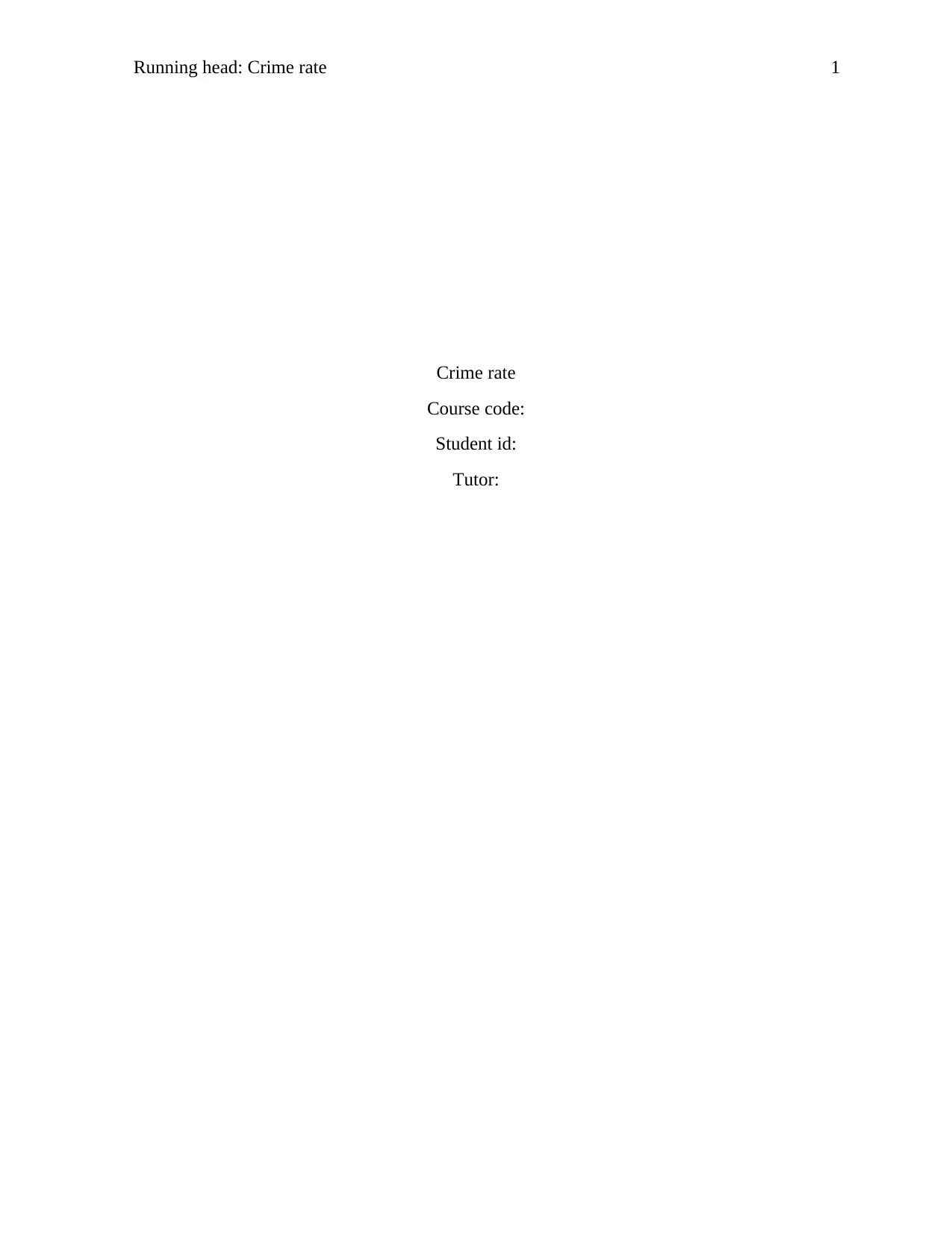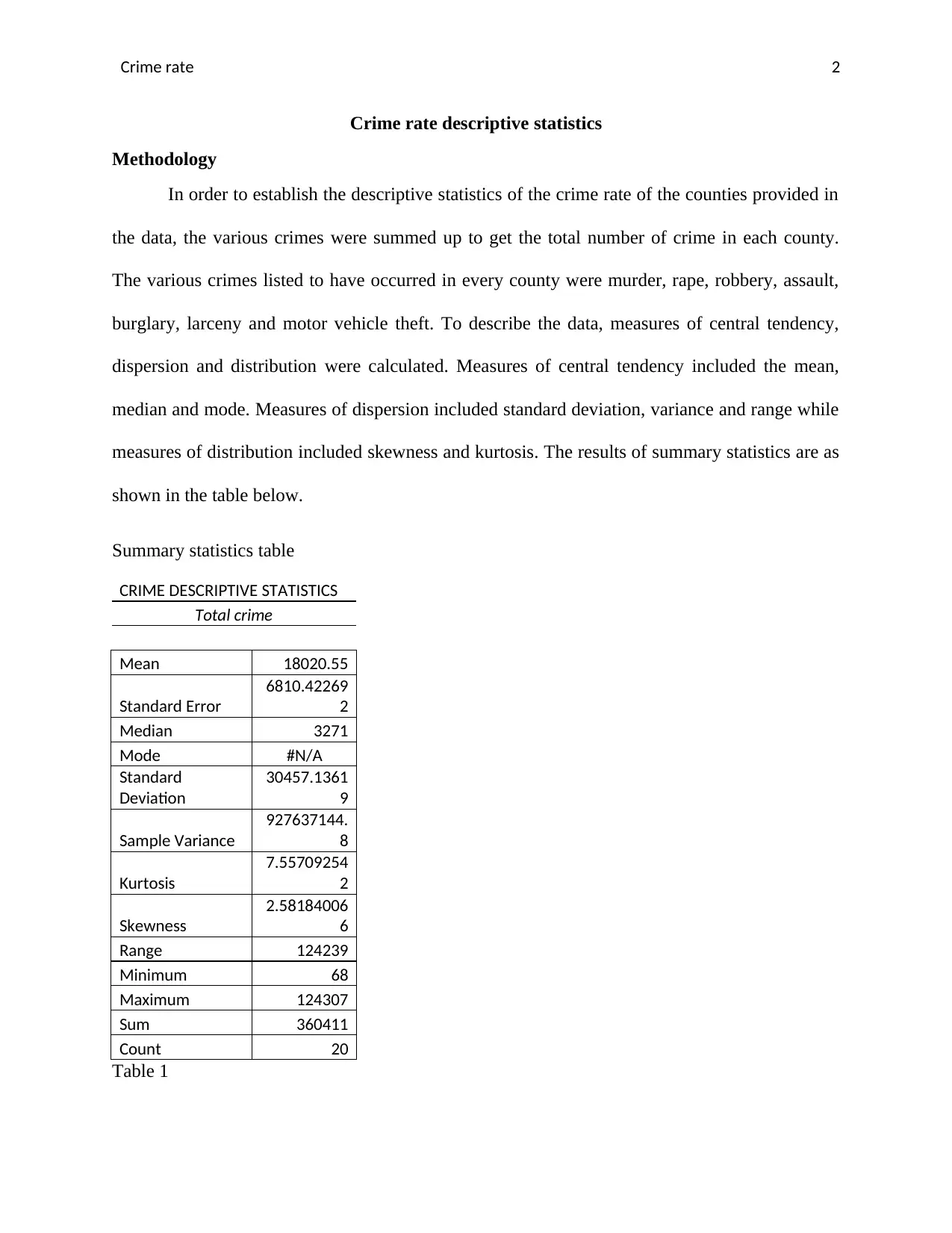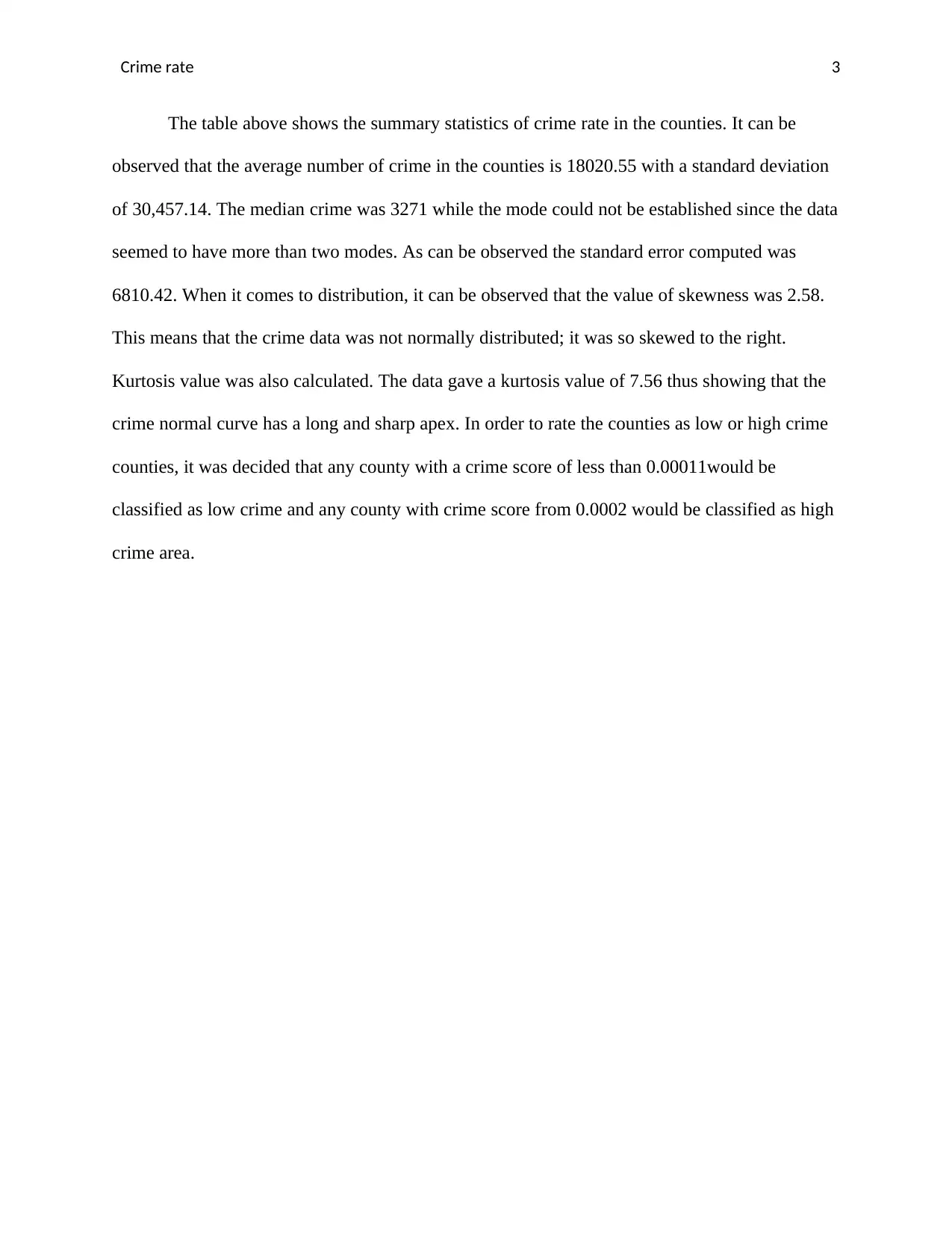Crime Rate Analysis: Descriptive Statistics Report - County Data
VerifiedAdded on 2022/08/12
|3
|370
|100
Report
AI Summary
This report presents a crime rate analysis using descriptive statistics. The analysis begins by calculating the total crime for each county, followed by the computation of various statistical measures, including the mean, median, mode, standard deviation, variance, range, skewness, and kurtosis. The results are presented in a summary statistics table, which shows an average crime rate, standard deviation, median, and standard error. The report interprets the skewness and kurtosis values to describe the distribution of the crime data. Finally, a classification system is proposed to categorize counties as low or high crime areas based on crime scores, and the report concludes by providing an overview of the data analysis, statistical calculations, and the insights gained.
1 out of 3










![[object Object]](/_next/static/media/star-bottom.7253800d.svg)